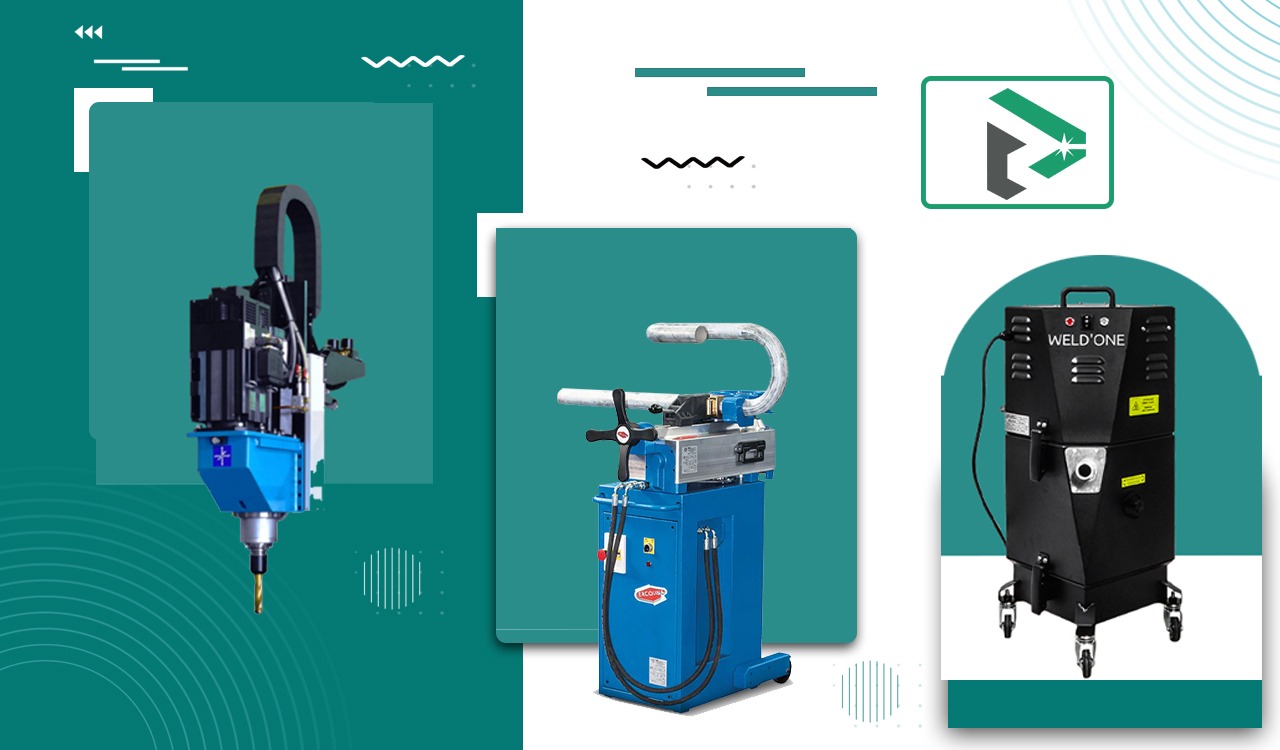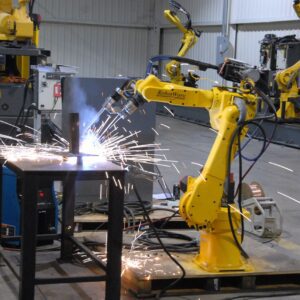Welding automation has emerged as a cornerstone of modern manufacturing, significantly enhancing efficiency, precision, and overall product quality. In the dynamic landscape of the UAE’s metalworking industry, selecting the appropriate welding process is paramount to achieving optimal results. This blog delves into the intricacies of laser welding and arc welding automation, highlighting their strengths, weaknesses, and ideal applications within the context of the manufacturing sector in the UAE.
Laser Welding: Precision and Speed for UAE’s High-End Manufacturing
Laser welding machines, characterized by their use of a high-power laser beam to melt and join materials, have garnered significant attention in the UAE due to their exceptional precision and speed. This technology is particularly well-suited for the country’s burgeoning aerospace, automotive, and medical device sectors, where intricate components demand meticulous welding processes.
Advantages of Laser Welding for UAE:
- Enhanced Precision: Laser welding machines in the UAE focused beam enable precise control over the weld pool, resulting in minimal distortion and superior joint quality, essential for high-end components.
- Rapid Welding Speeds: The UAE’s fast-paced manufacturing environment benefits from laser welding machines’ ability to significantly increase production rates.
- Diverse Material Compatibility: Laser welding excels in joining dissimilar materials, a crucial capability for the UAE’s varied manufacturing landscape.
- Minimal Heat-Affected Zone (HAZ): Reducing the HAZ preserves material properties, making laser welding machines ideal for sensitive components.
Challenges and Considerations:
- High Initial Investment: The advanced technology and equipment associated with laser welding machines require substantial upfront costs.
- Operator Expertise: Skilled operators are essential to maximize the benefits of laser welding machines.
- Material Thickness Limitations: While laser welding excels with thin materials, thicker sections may require alternative processes.
Arc Welding: Versatility and Cost-Effectiveness for UAE’s General Fabrication
Arc welding machines, employing an electric arc to melt and join metals, remain a versatile and cost-effective option for many applications in the UAE’s metalworking industry. It is a well-liked option for general fabrication, construction, and shipbuilding due to its versatility with different materials and thicknesses.
Advantages of Arc Welding machines for UAE:
- Versatility: Arc welding machines accommodate a wide range of materials and thicknesses, making it suitable for diverse projects.
- Lower Initial Investment: Arc welding machines are typically less expensive than laser welding equipment.
- Established Expertise: A skilled workforce familiar with arc welding machines is readily available in the UAE.
Challenges and Considerations:
- Lower Precision: Arc welding machines typically result in a wider HAZ and less precise welds compared to laser welding.
- Higher Distortion Potential: The heat generated during arc welding machines can lead to material distortion.
- Slower Welding Speeds: Arc welding processes are generally slower than laser welding.
Comparing Laser and Arc Welding for UAE Applications
The choice between laser and arc welding machines depends on several factors, including material type, thickness, desired joint quality, production volume, and budget.
A comparative analysis of key parameters is essential for informed decision-making:
- Joint Quality: Laser welding machines often produce superior joint quality with narrower HAZ and minimal distortion, whereas arc welding machines may result in wider HAZ and potential distortion.
- Material Compatibility: Laser welding machines excel in joining dissimilar materials, while arc welding is more versatile for a broader range of materials.
- Production Speed: Laser welding machines typically offer faster welding speeds, enhancing productivity.
- Cost Analysis: Arc welding machines generally have lower initial costs but higher operating expenses, while laser welding machines involve higher upfront investments but often lower long-term costs.
- Automation Capabilities: Both laser and arc welding machines can be highly automated, but laser welding often offers greater precision and flexibility in automation.
Laser and Arc Welding Applications in the UAE
Laser Welding: Aerospace components, automotive body panels, medical implants, electronics, and precision parts.
Arc Welding: Construction structures, shipbuilding, heavy equipment, general fabrication, and maintenance and repair.
Conclusion
The UAE’s metalworking industry stands to benefit significantly from both laser and arc welding automation. Manufacturers can attain a competitive edge, improve product quality, and streamline production processes by meticulously evaluating the unique demands of every application. As technology continues to advance, hybrid welding processes combining the strengths of both laser and arc welding machines in the UAE may emerge as viable options for even greater flexibility and performance.
Continue reading, click: Welding Automation: A Game-Changer for UAE’s Manufacturing


